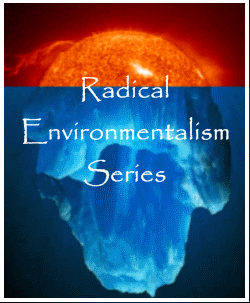 While teaching a Sunday morning class on the topic of various worldviews, I plan to share some of the more significant findings which our class is learning. The main text for the study is The Battle for Truth by David Noebel. A good deal of this class is also based on personal research.
While teaching a Sunday morning class on the topic of various worldviews, I plan to share some of the more significant findings which our class is learning. The main text for the study is The Battle for Truth by David Noebel. A good deal of this class is also based on personal research.*********************
Cosmic Humanists wants nothing more than for man to fulfill his ultimate purpose of ushering in the New Age (their words, not mine). Consequently, they require a theory of science and the origin of man which allows for a constant self-improvement plan – a spiraling upward of man’s abilities and “consciousness”. The problem that faces this theory is that each individual clearly progresses at a different rate. How do they overcome the possibility that some will progress toward their desired end state more quickly than others?
Their answer lies in the concept of individualism vs. collectivism. Marilyn Ferguson has said, “The proven plasticity of the human brain and human awareness offers the possibility that individual evolution may lead to collective evolution. When one person has unlocked a new capacity its existence is suddenly evident to others, who may then develop the same capacity.” Thus, the “growth” of one person may be enough to drag all others along to the higher state. In all seriousness, I see very little difference between such a society and that of the Borg from Star Trek. The aim of both movements (I know, I know, one is fictional!) is to achieve perfection by adding biological and technological improvements to the species.
So, evolution is fundamental to the New Age movement. But how does the Cosmic Humanist see such a change occurring – as gradual steps over time, or as something else? Like Marxism, the New Ager believes that such collective changes will likely happen in surges. When one individual breaks through with an evolutionary change, society will quickly copy it and bring everyone else along, one step closer to enlightenment. David Spangler describes this - “In this [evolutionary] context, civilizations, like individuals, go through profound changes from time to time which represent discontinuities; that is, a jump or shift is made from one evolutionary condition to another. The New Age is such a shift.”
Once again, the mechanism to achieve this state is the theory of punctuated equilibrium. A surge of biological improvement will quickly be created and adopted within the species. And while this theory is supported by few observations (as well as entirely violating the Second Law of Thermodynamics), the convenience it provides is too tempting to be ignored. As we pointed out in the section on Marxist biology, bad science backed by insubstantial proof is completely trumped by a theory - if that theory allows one to believe whatever they want.
Why is this theory so popular, even though science sees little proof of such a mechanism? For the New Ager, it solves two problems.
1) It promises a shared future divinityThe promise of one day becoming gods ourselves is very tempting for some. Indeed, the New Age philosophy says that we are gods today – just imperfect ones. Like Marxism, this worldview is rooted in the desire to deny the existence of a single Creator of everything. Instead, a magical “force” drives the New Age movement along, gaining continual improvement and harmony (perhaps I’ve now moved from Star Trek to Star Wars?).
2) It solves the worry of sin – by denying any original fall of Man
So, I ask a question. If we are constantly marching toward enlightenment and peace, then why is there still war and disease and starvation and cruelty? Have these things become better over time? I would make the case that they have not. In fact, the world seems to have become a much worse place in which to live than the 1950’s, when the Leave It To Beaver family lifestyle was popular. Cosmic humanists see this world as Paradise, which is slowly being unveiled. Joseph Campbell explained the disconnect between theory and observation of this world by saying, “That is the way it feels, but this is it. This is Eden.” Humans need to “see not the world of solid things, but a world of radiance.”
My advice – be very careful. The pull of New Age thinking is everywhere around us, and the danger in it is that it often lies very close to the truth. To see an example of this, reference Dan Brown’s latest book The Lost Symbol. This book progresses along a fascinating path of science and in some places, Biblical teaching, nearly ending in absolute Christian truth, only to take a final diversion away. It is so close to God’s truth at times – but close is not correct. That is why real truth must be absolute.
**********************
Next: Worldview #2 - Part 11 – Biblical Christian Biology
-- or –
Back to the start of this series
-- or --
Back to Worldview Series #1











2 comments:
chenlina20160527
tory burch handbags
oakley vault
coach outlet store online
jordan 3
ralph lauren
polo ralph lauren
coach outlet store online
polo ralph kids
christian louboutin outlet
nike air max 90
lebron shoes
lebron james shoes 13
adidas originals
louis vuitton outlet
louis vuitton outlet stores
coach factory outlet online
michael kors uk
oakley sunglasses
supra shoes
michael kors outlet
michael kors outlet
nike air max
coach outlet
michael kors canada
coach outlet
oakley vault
longchamp bags
toms shoes
michael kors handbags
coach outlet
coach outlet
michael kors handbags
michael kors outlet
ray ban sunglasses
cheap nfl jerseys
toms shoes
adidas nmd
michael kors outlet
oakley sunglasses outlet
louis vuitton outlet
as
yeezys
air max 95
nike air vapormax
adidas nmd r1
cheap mlb jerseys
yeezy 500 blush
michael kors outlet
balenciaga shoes
supreme clothing
puma fenty
Post a Comment